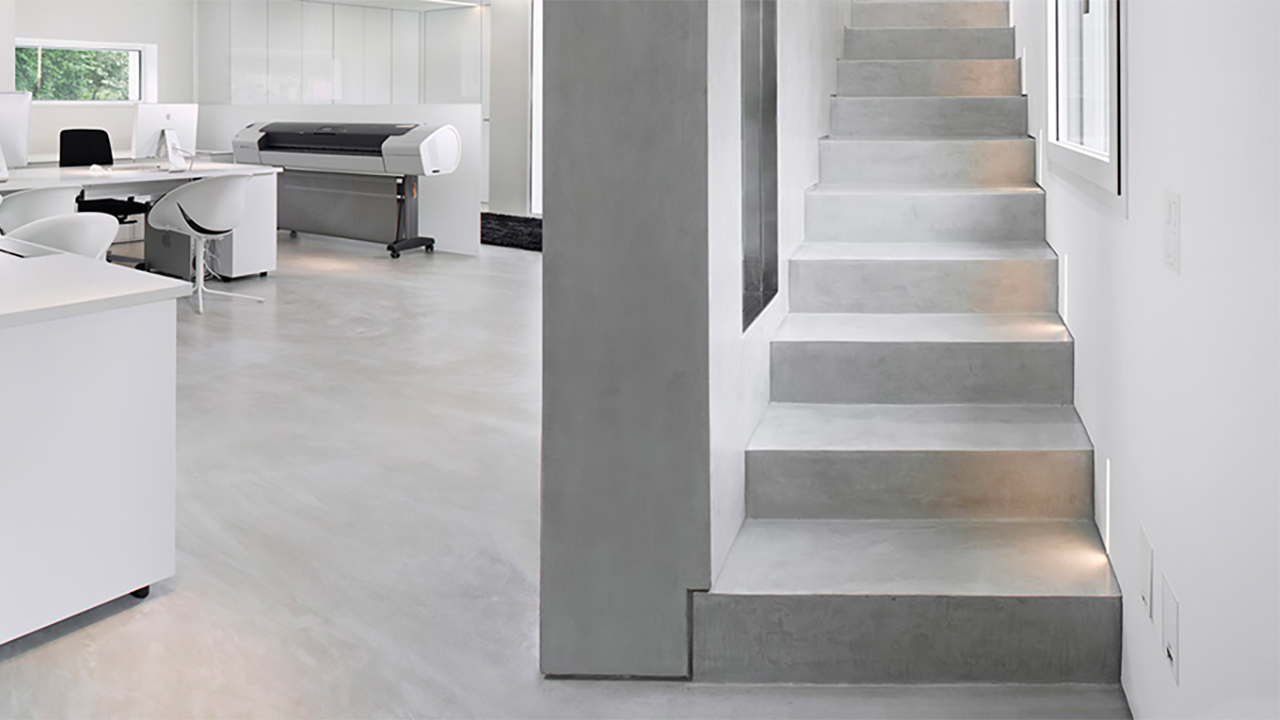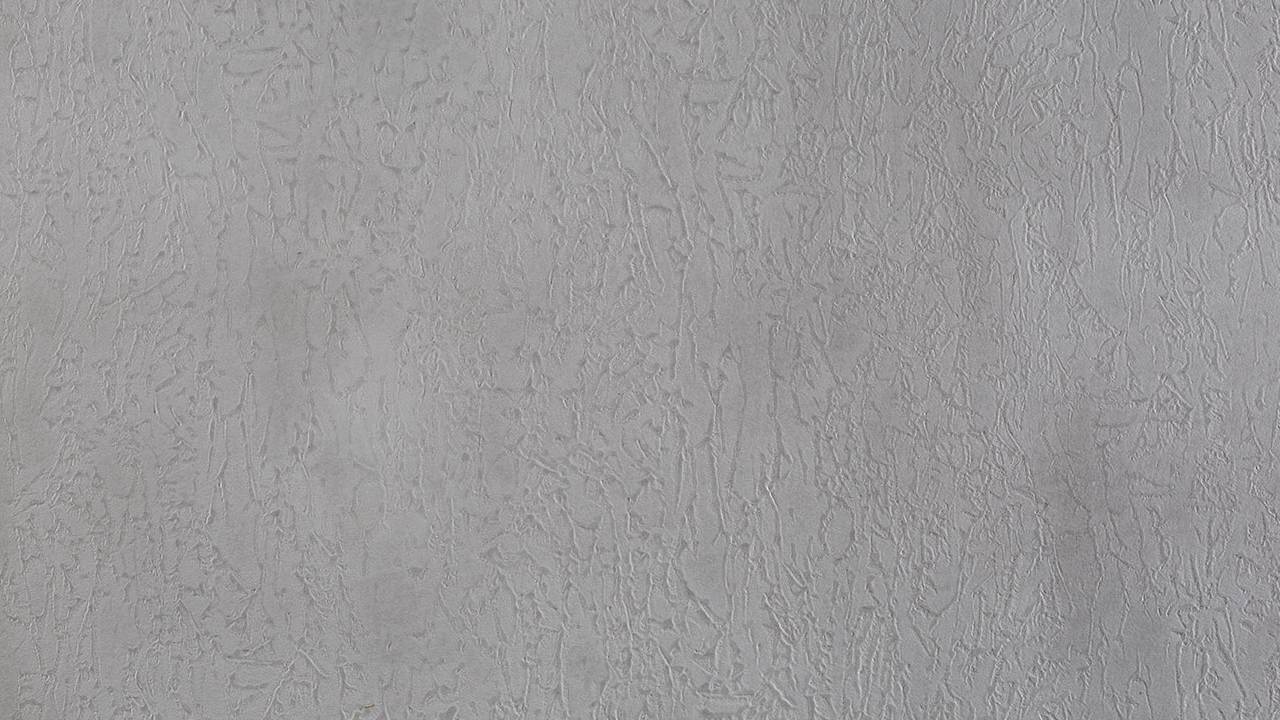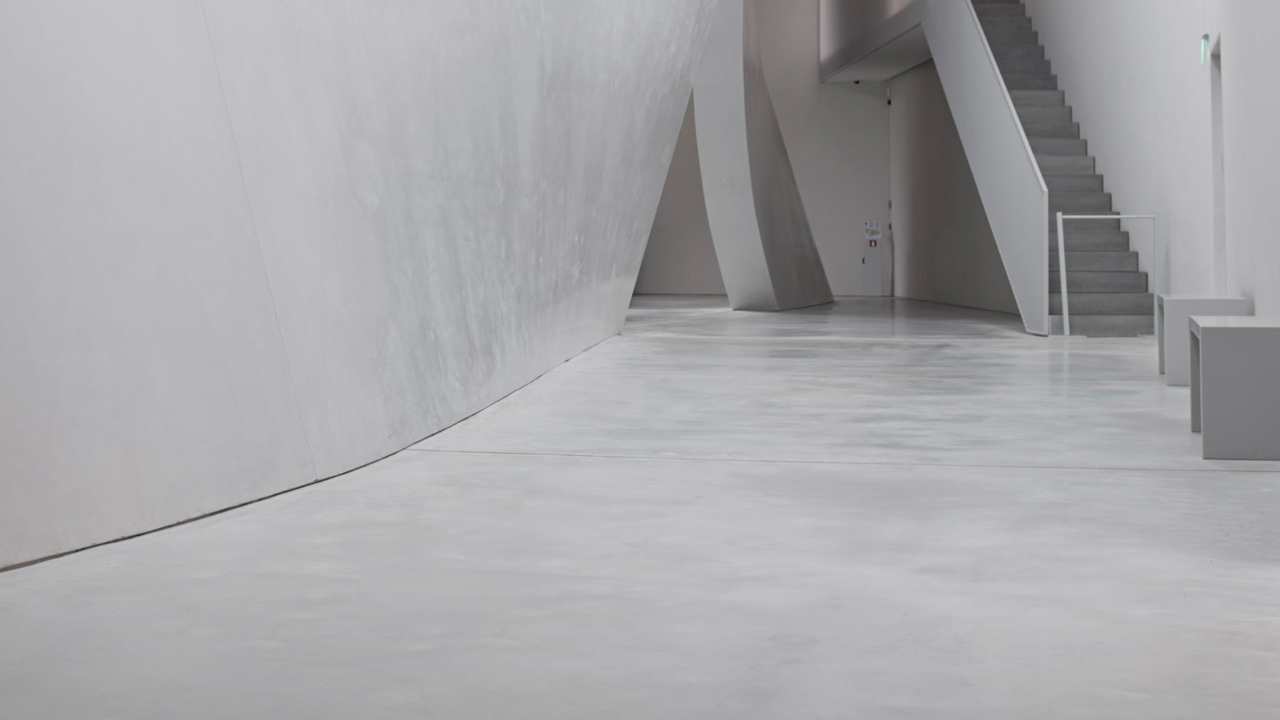What is Microcement?
Types and Composition
Microcement is a cement-based composite material that includes a combination of Portland cement, acrylic or polymer resins, fine sand, additives to improve its performance and mineral pigments for colour. This unique formula gives microcement superior aesthetic and functional qualities compared to more traditional cement coatings.
The applications of microcement are extremely varied: from domestic to commercial surfaces. It can be used to create continuous floors, cover furniture, or as a decorative finish on walls and ceilings. Its ability to adhere to almost any type of existing surface makes it ideal for renovations, allowing you to transform spaces without removing pre-existing surfaces.
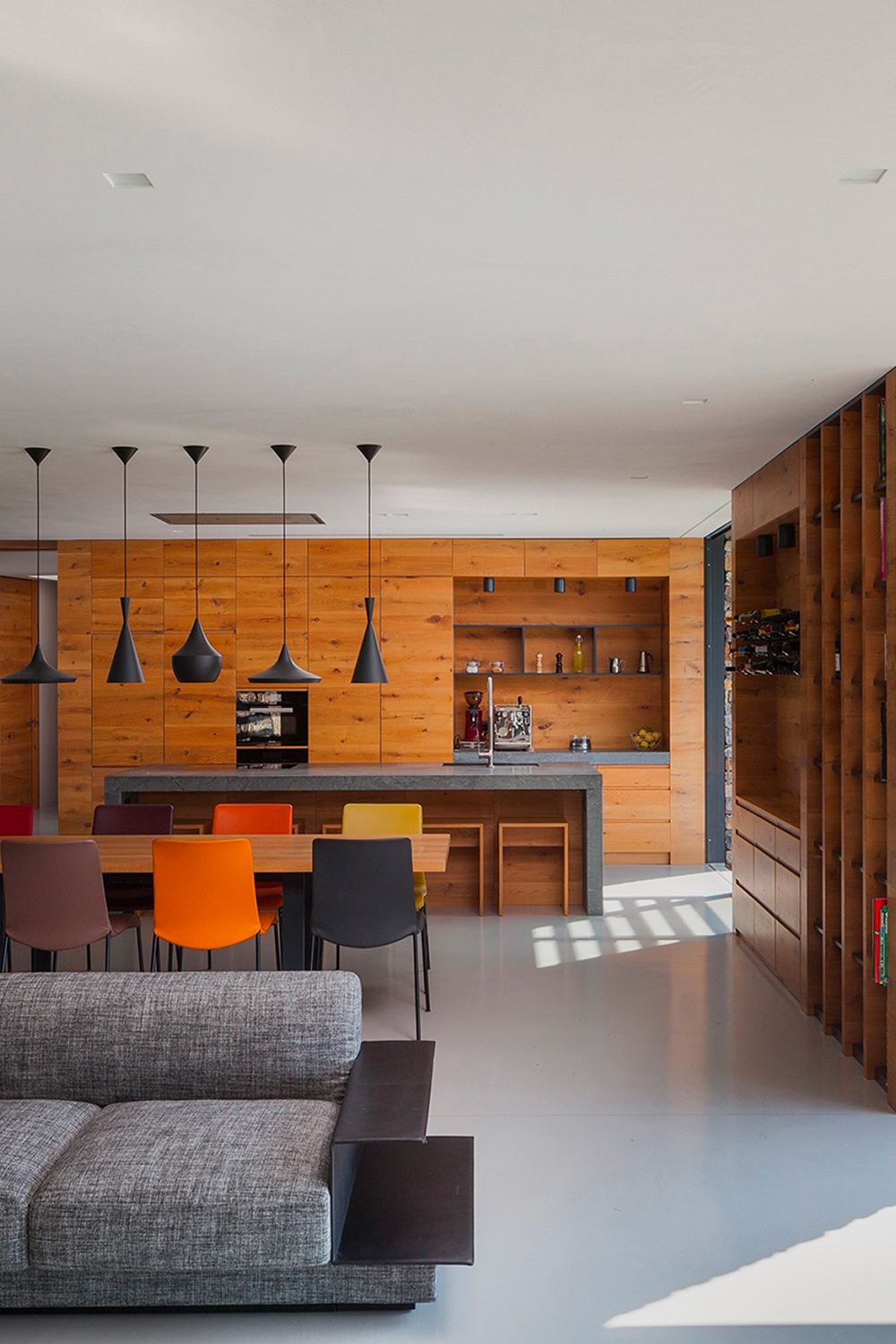
The advantages of microcement
– Aesthetic Versatility: wide range of colours and finishes, from glossy to matt, which makes it suitable for any decorative style.
– Seamless application: it provides a continuous surface that visually enlarges the space.
– Adaptability: it can be applied to almost any existing surface, which makes it ideal for renovation projects.
– Durability and easy maintenance: good resistance to stains, scratches, and wear. It requires only minimal maintenance.
– Quick installation: it can be installed more quickly than other coverings, reducing labour time and costs.
Ideal Work’s microcement systems
Almost all our flooring systems are cement-based and low thickness.
Among these, we have created two main microcement product lines that can be applied in a wide range of possibilities, allowing you to renovate old surfaces in just a few millimetres without demolition, without dirtying too much and without cutting the window frames. Ideal Work’s microcement can be applied quickly and with minimal inconvenience.
Ideal Work’s Microtopping®
Microtopping® is an innovative coating for floors and walls, for internal and external application, with a thickness of just 3 mm. This multipurpose solution can be installed on various existing surfaces to create a seamless environment that is highly customisable in terms of colours and finishes. It is particularly suitable for spaces with underfloor heating, thanks to its resistance to water and chemical agents. Find out more about Microtopping®.
Nuvolato Architop®
Ideal Work Nuvolato Architop® is a lightweight yet resistant concrete solution for indoor and outdoor industrial floors. With a thickness of 3-4 mm, it comes in 29 available colours and different finishes, providing the utmost customisation. Its high resistance to chemical and atmospheric agents makes it ideal also for high traffic areas. Find out more about Nuvolato Architop® here.
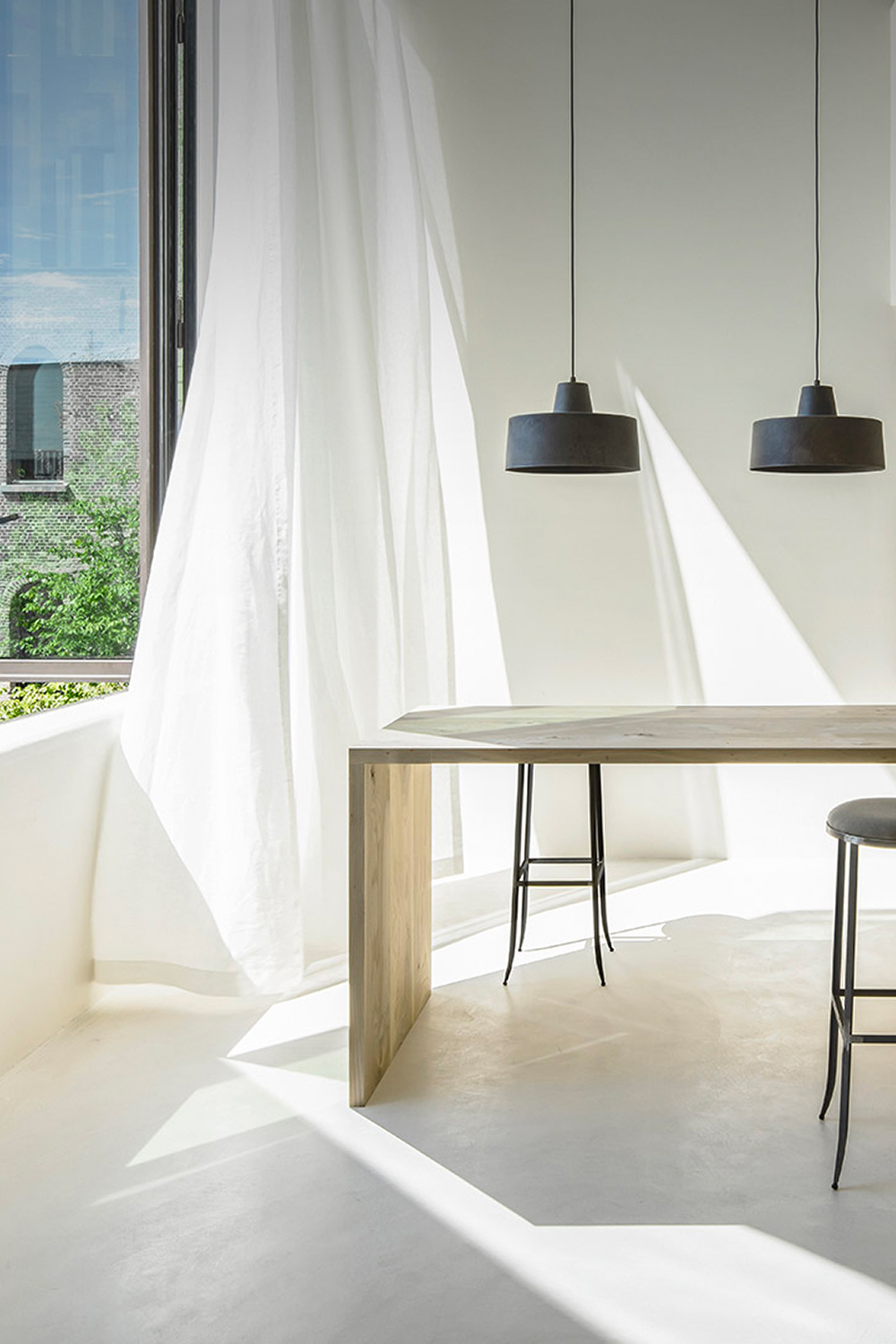
Microcement applications
Microcement is known for its extreme versatility and ability to transform both interior and exterior spaces.
Residences
Microcement is widely used in many domestic environments thanks to its neutral and modern aesthetics, as well as its resistance and ease of maintenance.
– Bathrooms: It is particularly suitable for bathrooms owing to its waterproof properties and resistance to mould, which make it ideal for floors, walls and even as a finish for sinks and tubs. Its monolithic and seamless appearance offers a clean and minimal design, reducing the areas where dirt can accumulate. To discover all the advantages of microcement’s bathroom applications, read our dedicated article.
– Kitchens: In kitchens, microcement can be used to create work surfaces, countertops and wall coverings. Its stain resistance and ease of cleaning make it a practical as well as aesthetically pleasing choice. Discover all the possibilities of microcement for kitchen applications.
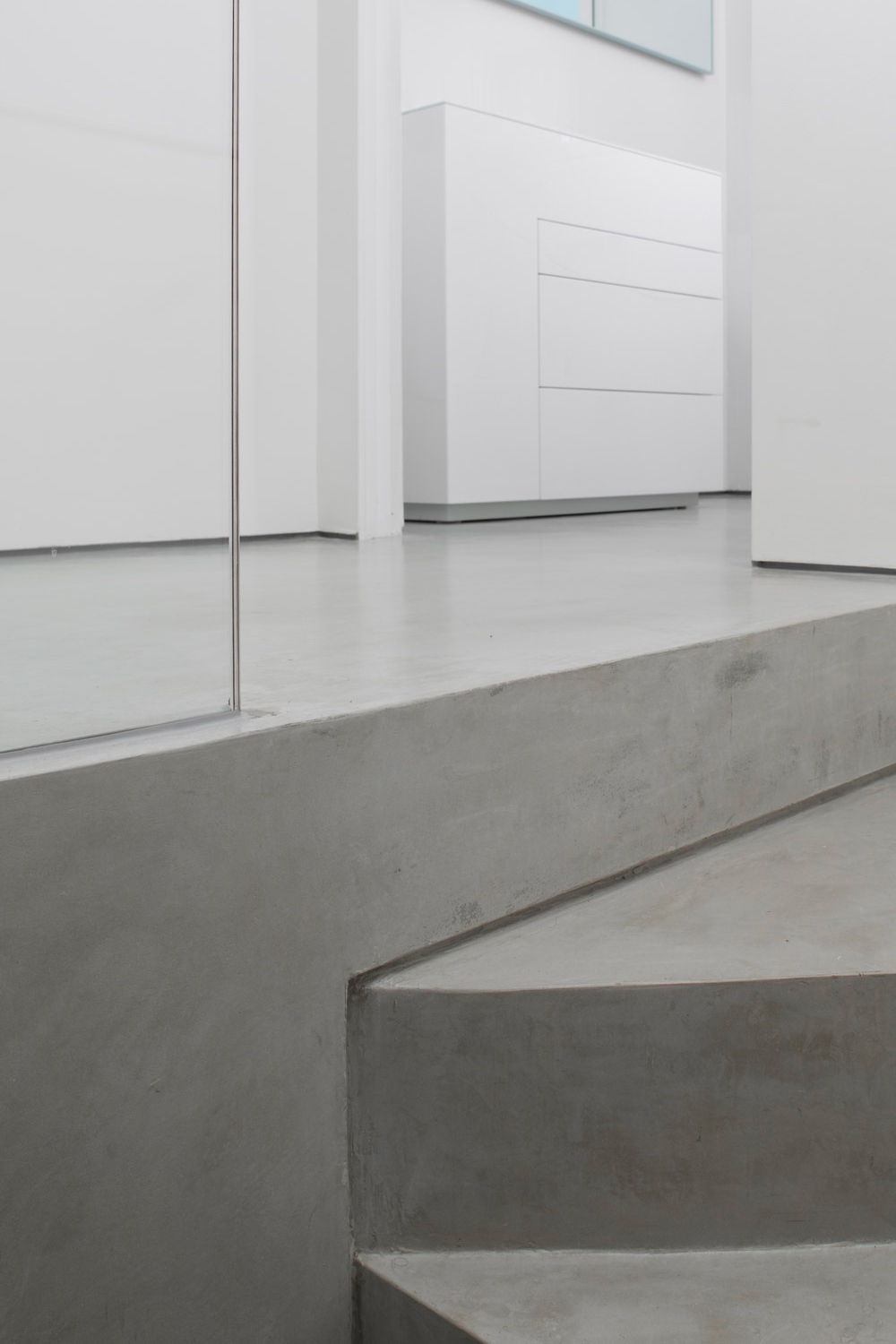
Microcement floors
As a flooring solution, microcement is valued for its durability and ability to withstand heavy traffic, making it ideal for areas such as living rooms and hallways. The wide range of finishes and colours available allows it to adapt to any decor style, from industrial to more traditional or contemporary.
Ideal Work is a leader in the application of microcement floors.
Here are some examples of the application of Ideal Work microcement.
Microcement stairs
With its contemporary and minimalist aesthetic, Microtopping® represents a modern and versatile solution for stairs. Its continuous and seamless nature creates a uniform and clean visual effect. With a wide range of colours and finishes, microcement allows you to customise your stairs to suit the style and needs of your space, ensuring a durable option with an attractive design.
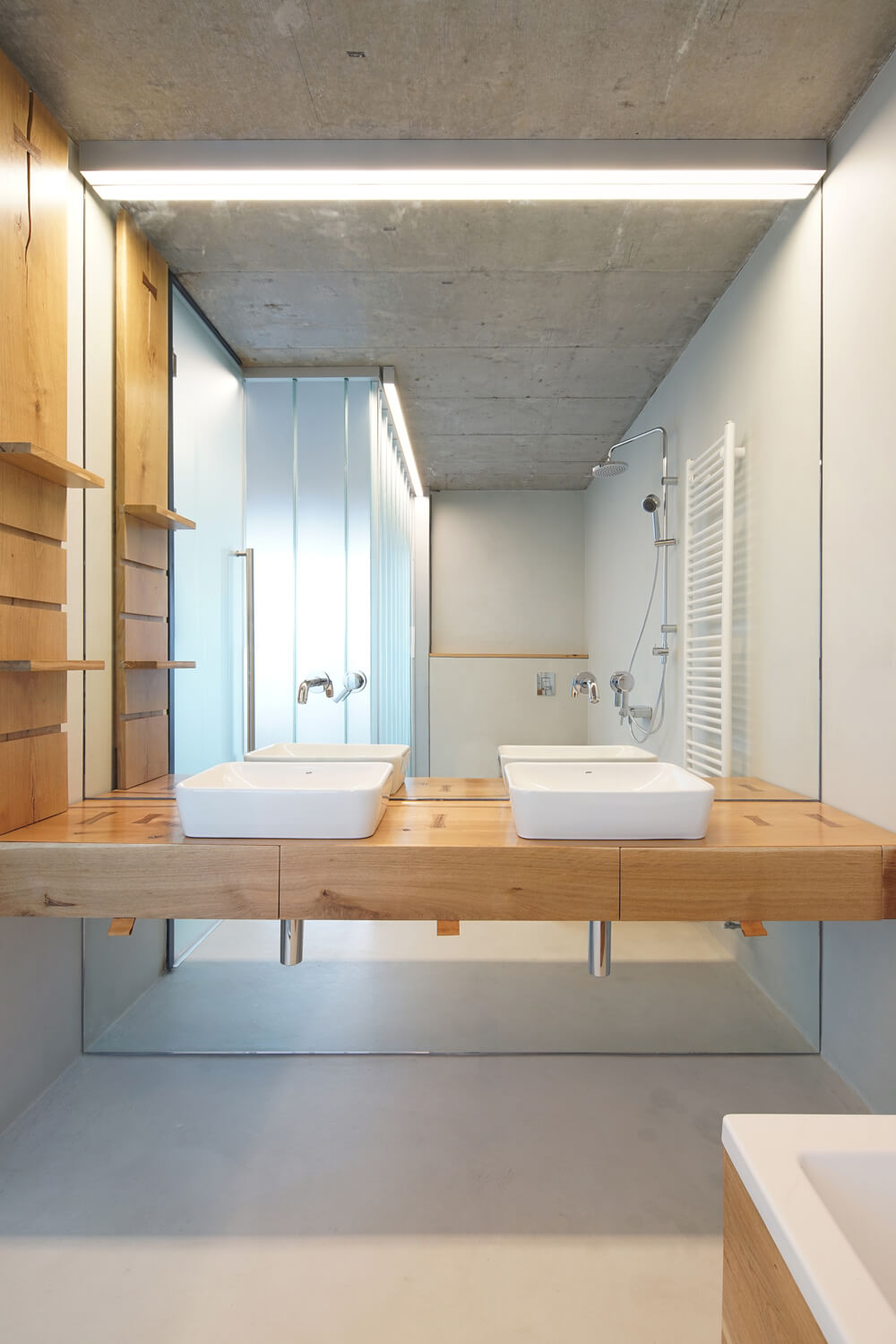
Microcement bathroom
A bathroom covered in Microtopping® offers a contemporary and refined atmosphere and adds an air of urban modernity to the environment. Thanks to its seamlessness, microcement gives any bathroom a clean and uniform appearance. Its resistance to humidity makes it particularly suitable for this environment, especially thanks to the use of anti-humidity products. It is also easy to clean and maintain. For more information, read our article on microcement for bathroom application.
Microcement walls
As a wall covering, Microtopping® offers an elegant opportunity for style and practicality, ensuring a sophisticated environment. Microcement’s resistance to humidity makes it ideal for environments such as bathrooms and kitchens, while its wide range of colours and finishes allows for custom-made private or public environments. Read the following page to learn more about all the possibilities offered by microcement for walls.
Commercial spaces
Microcement is also particularly suitable for commercial spaces, where the demands of durability and maintenance meet the desire for an attractive aesthetic.
– Offices: in offices, microcement is often used for floors and walls, providing a visually clean working environment while maintaining good resistance to wear and tear. Here are some examples of application.
– Shops and showrooms: in shops and showrooms, where aesthetics play a crucial role in attracting and retaining customers, microcement offers a neutral, contemporary backdrop that highlights the products on display without distractions.
– Bars and restaurants: in bars and restaurants, the easy-to-clean and resistant properties of microcement make it ideal for floors, bar counters, and other surfaces subject to frequent stains and spills.
Microcement coatings for outdoor spaces
The robustness of microcement also suits outdoor applications, offering aesthetic and functional solutions to enhance open spaces.
– Terraces and balconies: on terraces and balconies, microcement is appreciated for its resistance to atmospheric agents and for its ability to create a visually extended space that connects seamlessly to the interior.
– Facades: As a facade coating, microcement offers long-lasting protection against the elements, maintaining its colour and structural integrity over time. It can also help modernise the exterior appearance of existing or new buildings.
– Landscape elements: for landscape elements such as paths, pool decks and other decorative structures, microcement is a functional choice that integrates perfectly with the natural environment.
To further explore the possibilities offered by Ideal Work for outdoor paving solutions, we invite you to read the dedicated page.
Application and Maintenance of Microcement
Application guide
Installing microcement requires care and precision to ensure optimal aesthetic and functional results. Following the correct steps and properly preparing the surface are essential to avoid future problems such as deep cracks or delamination. Tools needed include trowel, float trowels, rollers and brushes for the application of sealers, a sander or polisher (if necessary) for finishing, and masking tape to protect areas that should not be covered. It is also important to use a moisture meter to ensure the surface is adequately dry before application. Installation steps include surface preparation, which involves cleaning, drying and removing dust, grease or other contaminants, as well as repairing any existing damage such as cracks or holes. It is essential to level the surface and apply a specific primer to improve the adhesion of microcement to the underlying surface. Afterward, a microcement base is applied using a trowel or float, followed by the application of one or more subsequent coats to achieve the desired finish. After all the layers are dry, you should sand the surface to a smooth finish and apply one or more coats of sealer to protect the microcement from water, stains and wear. Finally, it is important to wait for the surface to fully harden before using it, as instructed by the manufacturer, and to follow the post-installation care and maintenance practices.
In our blog you can learn more about the application of microcement, but of course we invite you not to “do-it-yourself” without specific knowledge. Trust our professional installers to be sure that the outcome is perfect.
Maintenance and Care
Correctly maintaining microcement is essential to preserve its appearance and performance over time. After installation, it is advisable to regularly clean the surface with neutral, non-abrasive detergents to remove dirt and surface stains. Avoid using aggressive products that could damage the sealant and compromise the durability of the coating. It is also important to periodically inspect the microcement surface for signs of wear, cracks or delamination and intervene promptly to make any necessary repairs. Applying additional layers of sealant according to the manufacturer’s recommendations can help extend the life of the coating and maintain its resistance to water and stains. With proper maintenance, microcement can retain its beauty and functionality for many years.
Design and Inspiration
Current Trends
Increasingly popular in interior design and architecture, microcement offers contemporary aesthetics and versatility at once. Current trends highlight creative applications, from elegant minimalism with continuous, seamless surfaces, to the creation of textures that mimic natural materials such as stone or raw concrete. The use of coloured accents, from neutral to bold hues, enlivens spaces, while combinations with wood, metal and glass define environments without the use of traditional walls. Valued for its sustainability and low environmental impact, microcement is increasingly being chosen for renovations. Through its ability to be applied directly to existing substrates it also responds to the growing demand for eco-sustainable materials.
Microcement colours
Microcement colours offer a wide range of possibilities to customise spaces according to individual style and preferences. From the calm of neutral tones such as white, grey and beige, ideal for a minimalist or contemporary style, to the vivacity of bold colours such as blue, green or red, perfect for adding distinctive accents and personality to spaces. In addition to solid colours, microcement is also available in finishes that imitate natural materials such as stone, wood or marble, further expanding the aesthetic options. Colour choices not only affect the visual appearance of the space, but can also help create specific atmospheres, ranging from classic elegance to modern eclecticism.
The versatility of microcement also allows you to play with gradation and shading effects, creating artistic and dynamic compositions that adapt to different design needs. This material allows you to experiment with chromatic contrasts and unusual combinations, giving life to unique and original environments. Available in a wide range of colours and finishes, microcement is an ideal choice for design projects that aim to combine aesthetics and functionality in an innovative way.
Ideal Work has developed a new colour system applicable to microcement that will allow you to customise your new finishes according to your desires.
Project Gallery
To better illustrate the versatility and aesthetics of microcement, below are some successful projects that use this material in innovative and inspirational ways.
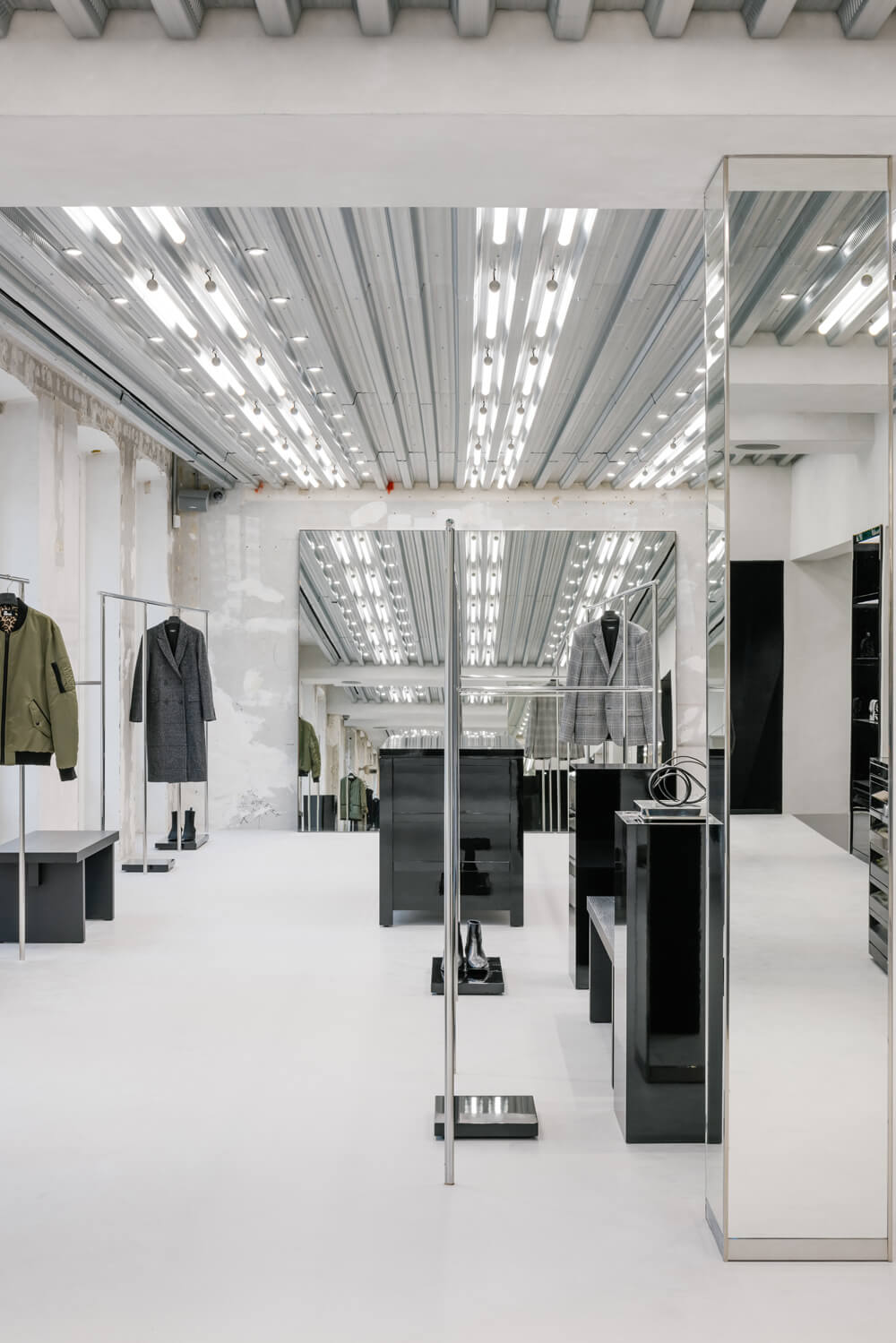
The Koople Boutique on the Champs-Elysées
In the heart of Paris, Ideal Work microcement made the Koople boutique an environment of pure luxury, reflecting a combination of urban and chic styles.
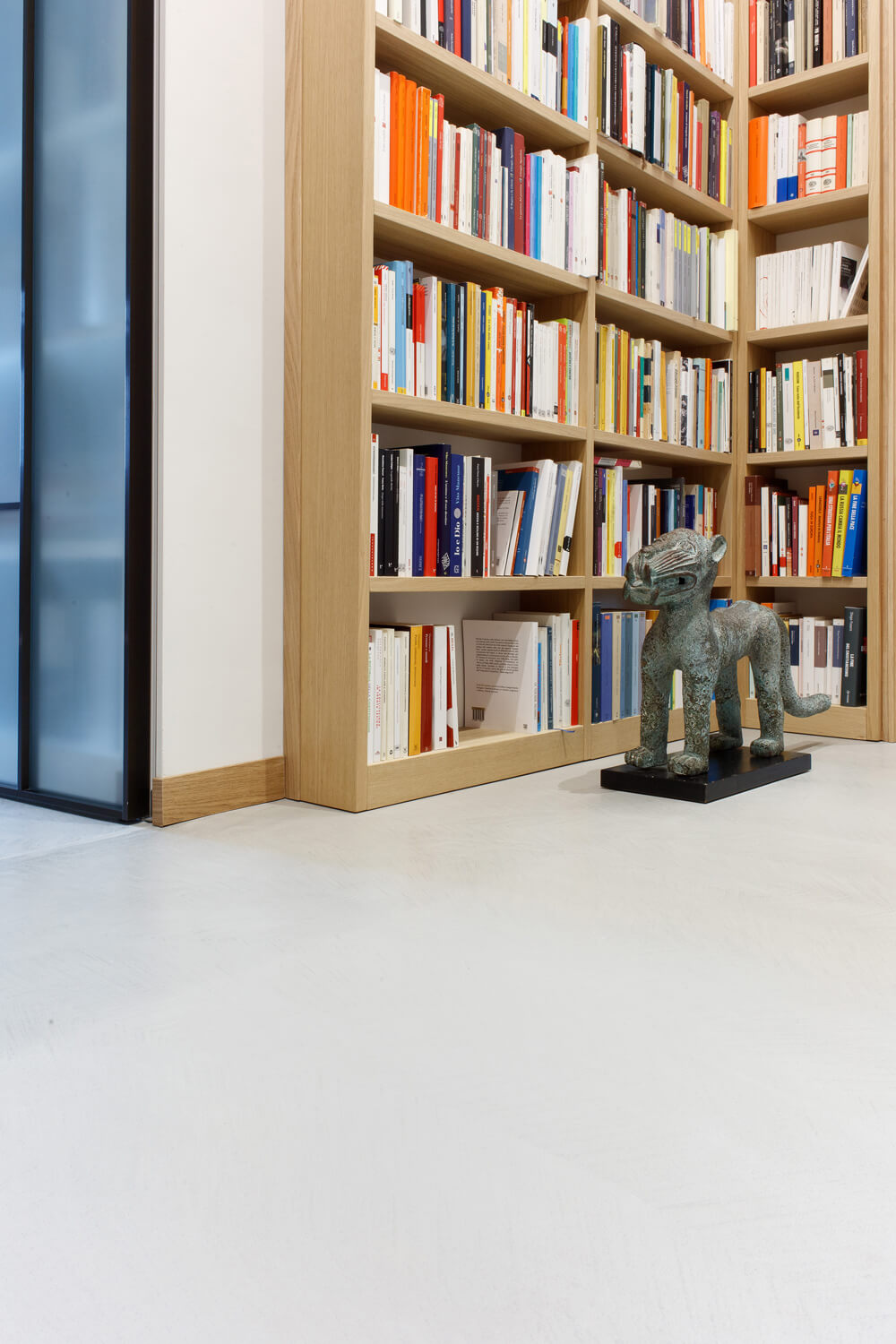
Private House in Mestre
This residence in Mestre was renovated with microcement surfaces that convey minimalism and functionality at once, creating a serene and welcoming environment. To learn more, click here.
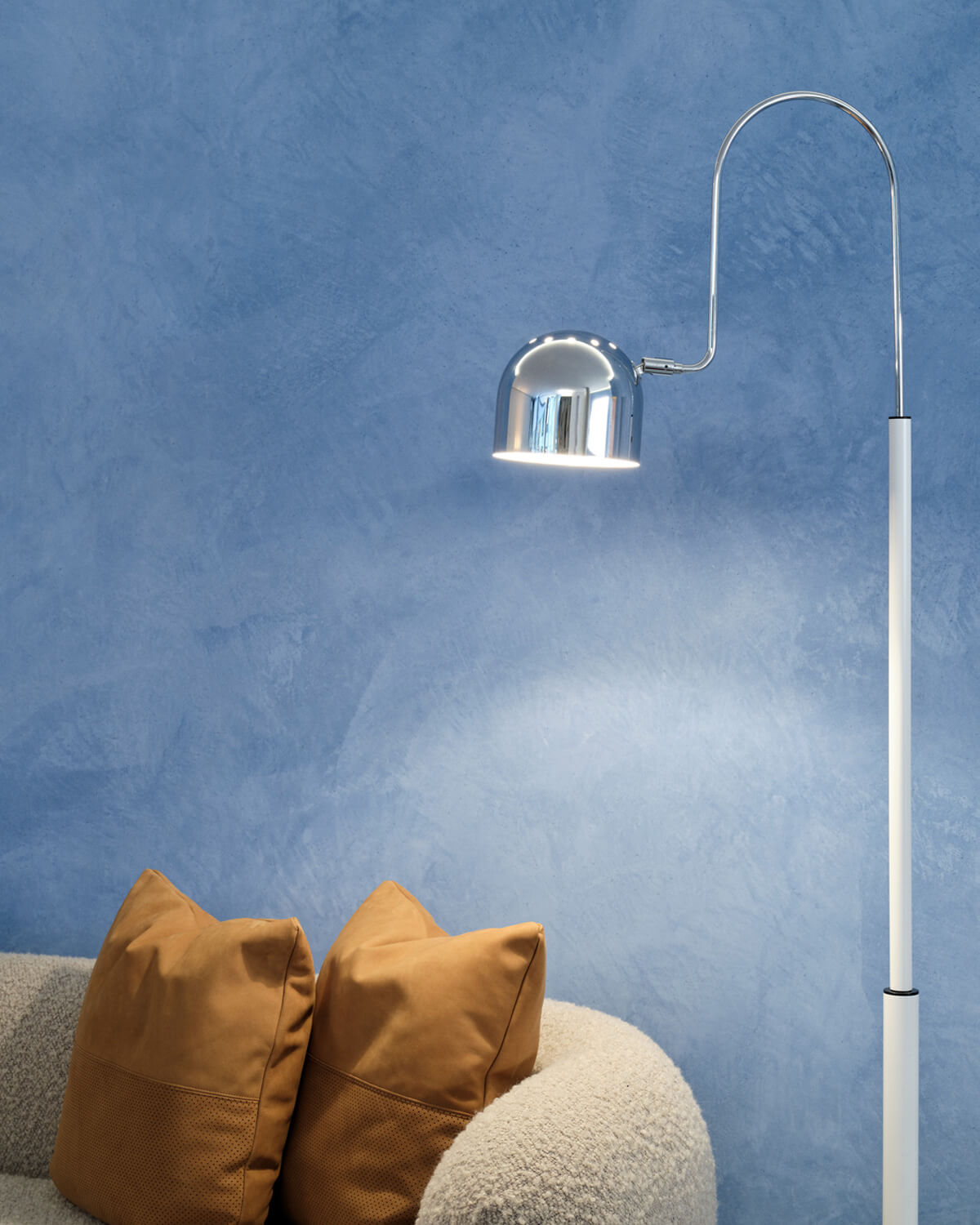
Flower Shop in Sydney
A flower shop in Sydney becomes an ode to creativity — microcement enhances every detail and colour of the floral arrangements. Explore the project here.
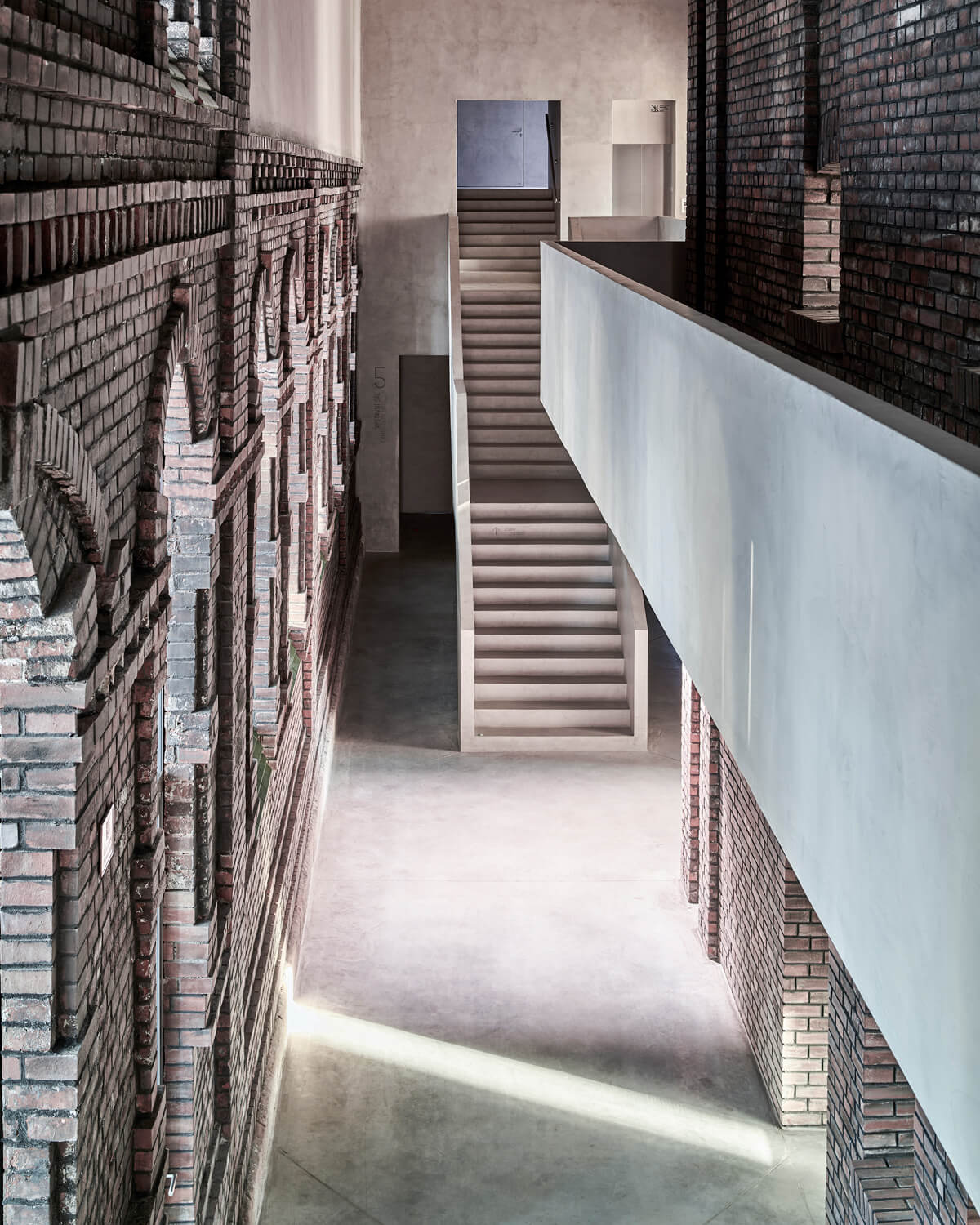
Plato Contemporary Art Gallery
Plato Contemporary Art Gallery transforms the exhibition space into an art stage, with microcement floorings amplifying its contemporary aesthetics. Learn more here.
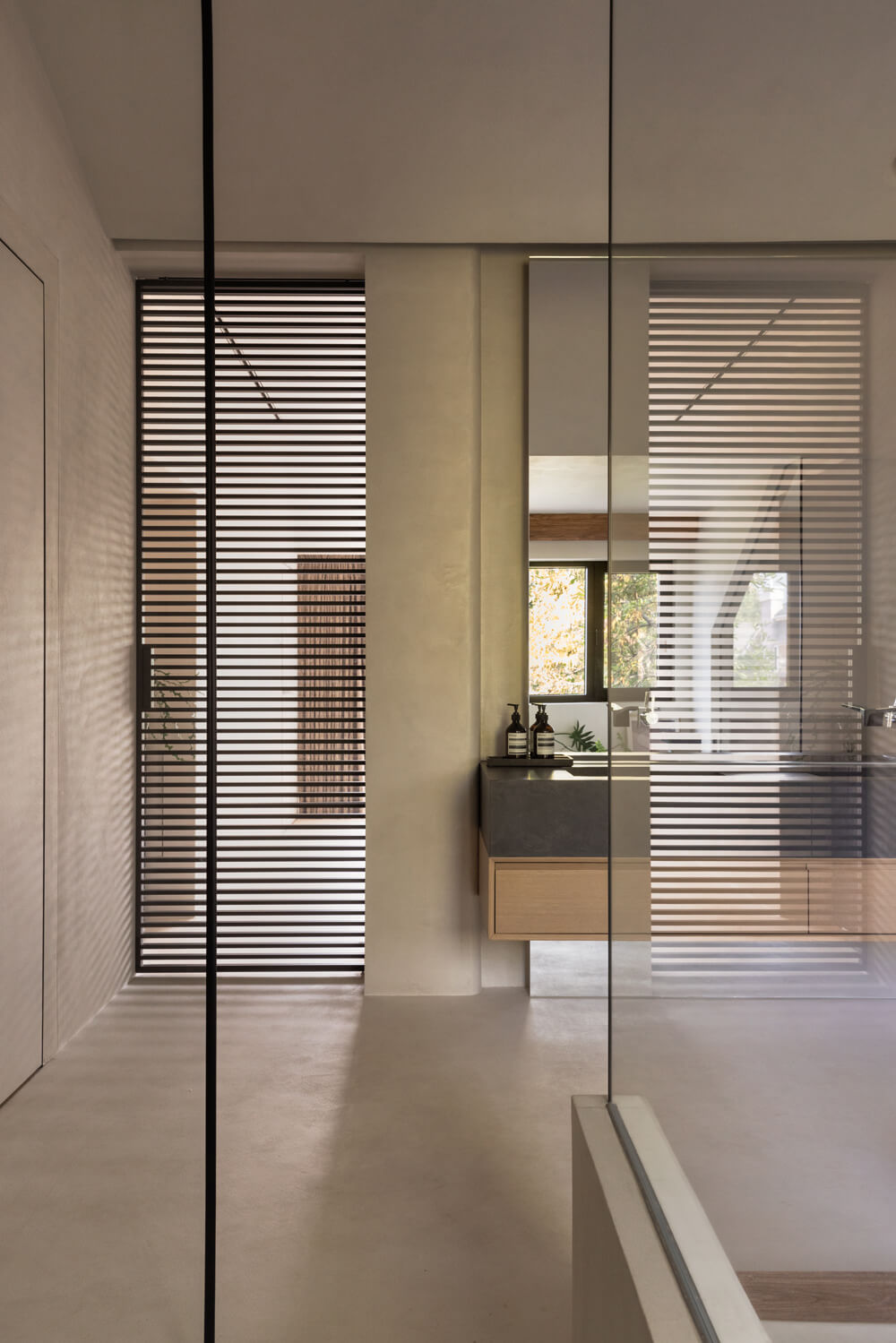
Private Villa in Changdao
Nestled in the tranquility of Changdao Island, this villa uses Ideal Work microcement to blend elegance and functionality. The spaces are transformed into a seamless canvas that captures natural light and the beauty of the exterior. Learn more about this project here.
These examples show how microcement can adapt to multiple contexts, countries, and landscape.
Its applicability in a wide range of design projects opens up endless creative possibilities for architects and designers alike.
The Costs of Microcement
Microcement is an innovative solution in the field of coatings which offers significant aesthetic and functional advantages. It is however also important to consider the costs and return on investment (ROI) associated with its choice.
Microcement costs vary based on several factors, including the size of the area to be covered, the complexity of the project, and the choice of finishes. However, in general, microcement can be considered a medium to high level investment compared to other floor and wall materials. Although the initial cost may be higher, the long-term benefits — such as durability, resistance, and ease of maintenance — often offset this initial expense. Additionally, costs can vary depending on the availability of materials and the skills needed for installation, so it is advisable to obtain detailed estimates from qualified professionals before embarking on a microcement coating project.
Added Value
Durability and Maintenance: Microcement is extremely durable and requires little maintenance. This reduces the long-term costs associated with repairs, replacements and periodic maintenance, which are often necessary with other coating materials. Its longevity can therefore contribute to a better ROI over time.
Aesthetics and Market Value: microcement can increase the aesthetic value of a property, making it more attractive to potential buyers or tenants. In addition, its modern look and durability can increase the market value of the property, making the initial investment more profitable.
These factors make microcement a strategic and financially advantageous choice for many property owners and entrepreneurs.
Insights into Microcement
Differences between Microcement and Other Materials
Microcement, often considered as an alternative to traditional materials, can be compared to several options commonly used in construction and finishing. Compared to traditional cement, microcement, which is enriched with resins, polymers and additives, offers greater flexibility and water resistance. This makes it possible to apply it in thin layers on pre-existing surfaces and allows a wide range of colours and finishes without the need for additional treatments. To learn about the differences with resin, read the dedicated page.
Compared to vinyl floors, microcement may initially be more expensive, but it offers greater durability and strength, as well as a more refined aesthetic and a superior tactile sensation.
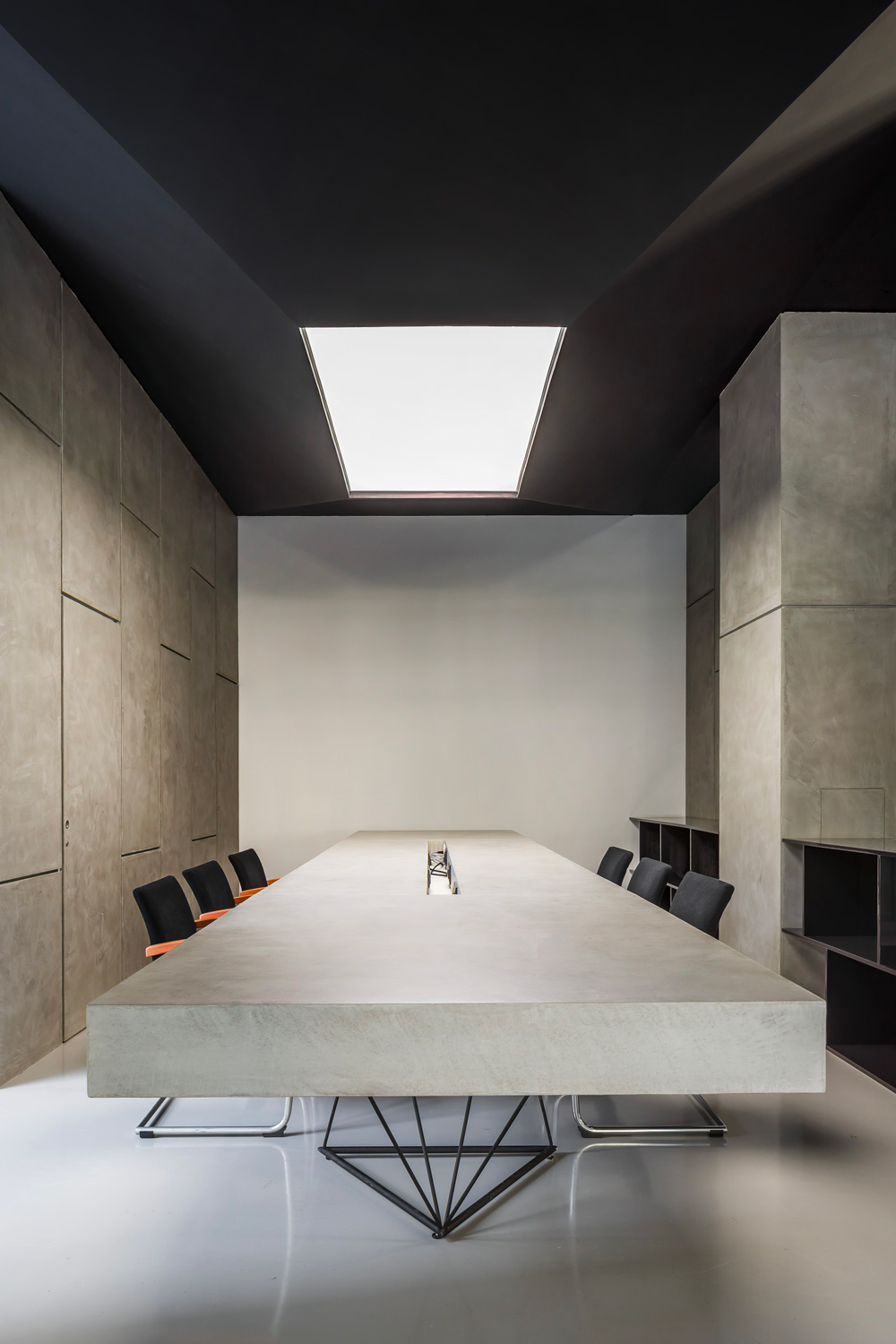
Application Possibilities
Furniture and Design Objects
Microcement is gaining popularity in furniture and decorative design, extending its use beyond traditional wall and floor applications. Thanks to its versatility and low-thickness application, microcement is ideal for covering a variety of shapes and structures, always providing a modern and sophisticated aesthetic.
Applications in furniture design:
– Tables and chairs: Microcement can be used to create seamless surfaces on tables and chairs, adding a minimalist and contemporary look. The colour and texture of the finish can be customised, adapting the surface to different furnishing styles.
– Decorative elements: Vases, lamps, and other small decorative objects can be coated in microcement to add a touch of modernity and uniqueness.
– Outdoor furniture: Microcement is particularly suitable for outdoor furniture thanks to its resistance to weather and UV rays, making it a practical as well as aesthetic choice for gardens and terraces.
The ease with which microcement adapts to curved surfaces and its lightness, compared to other materials such as traditional cement, make it particularly attractive for the design of modern furniture. Furthermore, the possibility of integrating a wide range of colours and finishes allows designers to explore new trends and custom possibilities. If you want to learn more about this aspect, read the dedicated article.
Renovations and Restorations
Microcement plays a crucial role in renovations and restorations, especially in projects where it is essential to maintain existing structures while updating the appearance.
Thanks to its ability to adapt to a wide range of pre-existing surfaces, microcement offers a reliable and resistant solution able to quickly transform environments without the need for invasive demolition or complex construction work. Its applicability on floors, walls and furniture allows spaces to be renovated efficiently and without compromising the structural integrity of pre-existing surfaces. This flexibility makes microcement particularly valuable in the context of historic buildings and monuments, where the preservation of original architectural features is of fundamental importance. In such contexts, microcement makes it possible to preserve the essence and intrinsic charm of these structures, while simultaneously introducing modern and aesthetically appealing elements.
Microcement’s drying times and flexibility to fit into any design horizon make it ideal for restoration projects of various sizes and complexity, providing architects and designers with a creative and reliable tool to preserve historical heritage while adapting environments to contemporary needs and tastes.
Economic convenience
– Application on existing surfaces: one of the major advantages of microcement in renovations is the possibility to apply it directly to existing surfaces such as tiles, wood, or concrete without removing it. This significantly reduces the time and costs associated with demolition.
– Aesthetic transformation: microcement can completely transform the appearance of a room, making it more modern, bright and visually larger. The variety of finishes and colours available makes it suitable to adapt to any desired style.
Sustainability
– Minimal environmental impact: by eliminating the need for removal of existing materials, microcement helps reduce the production of demolition waste. This makes it a sustainable choice for renovation projects.
Custom Possibilities and Creative Options
Microcement is known for its wide range of custom possibilities, which allow it to adapt to any design style. Below are some of the creative options available — in addition to colours — to customise your surfaces.
Texture
– Smooth or textured: with microcement it is possible to obtain completely smooth or slightly textured finishes, depending on the application technique and tools used.
– Special effects: For more elaborate textures, you can incorporate materials such as small aggregates or use special trowels or stamping techniques.
Special Effects
– Acids: controlled acidification can be used to create marbled effects or to give microcement a more rustic look.
– Inlays and patterns: the application of stencils or adhesive tapes during the finishing stages allows you to create geometric designs, decorative bands and other custom-made patterns.
In addition to solving common problems, these advanced techniques expand the creative possibilities of microcement, making it one of the most versatile and desirable materials for modern designers and architects. Check out Ideal Work projects to get a sense of the breadth of available options.
Future Perspectives
Innovations and Future Trends
The field of microcement is constantly evolving, with a focus on innovations aimed at improving the material’s properties and expanding its applications — innovations driven both by market demands and new technologies. New trends include the development of eco-sustainable microcement, which uses recycled or organic materials to reduce environmental impact while maintaining aesthetic and functional qualities. At the same time, the use of more advanced resins promises to increase the durability and resistance of microcement, making it suitable for an even wider range of applications, especially outdoor. Application techniques are also evolving, with the prospect of automated applications that would improve precision and reduce installation times, making microcement an even more practical choice for large-scale projects. Furthermore, the integration of technologies such as radiant heating or humidity sensors could make microcement surfaces functionally advanced, opening up new possibilities for both use and application.
To learn more, read our article on the future of microcement.
Why choosing microcement
Below is a list of reasons
– Versatility
– Water resistance
– Wear resistance
– Wide range of colours and finishes
– Suitable for interiors and exteriors
– Seamless design (without visible joints)
– Easy to clean and maintain
– Low maintenance costs over time
– Suitable for renovations
– Applicable on different surfaces
– Quick drying
– Custom design
– Reduced structural weight
– Compatible with underfloor heating
– Eco-sustainability
– Long-lasting
– Contemporary and modern look
FAQ on Microcement
1- What is microcement?
Microcement is a composite coating based on cement, resins, additives and mineral pigments, which can be applied to a variety of surfaces to achieve a seamless and continuous finish.
2- What are the main advantages of microcement?
Versatility of application, resistance, minimal maintenance, wide range of finishes and colours, and seamless application for a modern and elegant look.
3- Can microcement be applied to existing surfaces?
Yes, one of the great advantages of microcement is its ability to adhere to various existing surfaces, including tiles, floors, walls and even furniture, without removal.
4- How resistant is microcement?
If properly applied and sealed, microcement is resistant to wear, scratches, stains and water, making it suitable for both residential and commercial environments.
5- Does microcement require maintenance?
Microcement requires very little maintenance. Cleaning it with water and neutral detergents is usually sufficient. It is recommended to reapply the sealant every few years to maintain water and stain resistance.
6- How to choose the colour of microcement?
Microcement can be pigmented during mixing, which offers a wide range of colour possibilities. Custom effects are also possible.
7- Is microcement suitable for underfloor heating?
Yes: microcement conducts heat well and can be an excellent choice for floors with underfloor heating, thanks also to its low thickness which promotes efficient heat transmission.
8- How much does microcement cost?
Costs can vary depending on the quality of the material, the surface to be covered and the complexity of the work. Generally, it is considered a medium-high price option — an economical one when compared to other high-quality coatings.
9- How long does it take to apply Microcement?
The application of microcement can take from a few days to a week, depending on the area to be covered and the condition of the substrate. Drying time between coats plays a crucial role in determining the application time of a project.
10- Is microcement eco-friendly?
Microcement can be considered relatively environmentally friendly due to its low material consumption per unit area and the possibility of applying it on existing surfaces, thereby reducing the need for additional building materials and waste.
11- Is microcement fire resistant?
Yes, microcement is fire resistant and does not contribute to the spread of flames, making it a safe choice for most domestic and commercial environments.
12- Can damage to microcement be repaired?
Minor damage can be repaired with a localised intervention without having to redo the entire surface, maintaining the uniform and seamless appearance of the surface.
13- Can microcement be used in humid environments such as bathrooms and kitchens?
Absolutely. Thanks to its resistance to water and stains, obtained through proper treatments and sealing, microcement proves to be an ideal solution for bathrooms, kitchens and other areas subject to humidity.
14- Is microcement slippery?
The slip resistance of a microcement finish can be increased according to one’s needs, which makes it suitable for outdoor pavings or wet areas.
15- How to clean microcement?
Daily cleaning requires only a soft broom, water and neutral detergents. It is important to avoid the use of abrasive or acidic products that can damage the finish.
16- Is microcement suitable for external application?
Yes: when properly applied and sealed, microcement is weather resistant and can be used for exterior pavings, walls and other surfaces.
17- Can microcement be applied on wood?
Yes, it can be applied to wooden surfaces, provided they are properly prepared and stabilised so as to avoid movement that could cause cracks in the coating.
18- How long does microcement last?
With proper application and maintenance, microcement can last for many years, maintaining its beauty and structural integrity without the need for frequent replacements.
